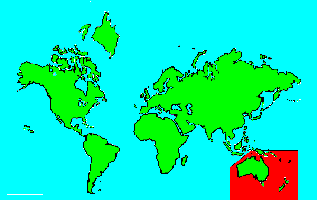SPECIES INFO
Long nosed saw shark (Pristiophorus cirratus) is a local species found along the shores of southern Australia. This small-medium shark rarely exceeds 4 feet, but records exist nearer 5 feet. This shark is generally quite narrow compared to other sharks. This peculiar shark when viewed from above has about 20 spines along each side of its elongated beak. There are two hanging barbels in the middle of the teeth. When viewed from the side, the long beak appears very narrow.The sawshark family (Pristiophoridae) contains about 9-10 species of long narrow sharks usually less than 4 feet in length. These species have spines along the lateral edges of their extended bill.
This order contains a single family with representatives in all 3 oceans. There are two genera with a total of 9 known species in this family. Although this ancient family has wide distribution, the individual species all have very limited and very local ranges. These unuusal sharks have an unuusal forward spined head extension that can comprise about 30% of the shark's total length. When viewed from above this "bill" has a tapering width, but from the side it appears very narrow.
Sharks and rays (Elasmobranchi), cartilaginous fishes, deserve to be a class separate from the normal fish, in that they do not have a bone skeleton but rather a cartilage skeleton.
Fertilization is internal in this class which also separates them from the bony fish class. Although there are a few fresh water species, the majority of the species in this class are found in salt water. As of 2005, there were about 500 known species of sharks and about 600 known species of rays.
David Ebert, author of a recent book on sharks, rays, and chimaeras of California, counts a total of 988 described species in the class with about 150 additional species awaiting scientific description. He breaks down the described species to 410 species of sharks, 543 species of rays, and 35 species of chimaeras.
Many species of sharks face an uncertain future, as the Chinese purchase shark fins to make shark fin soup. It was estimated that 100 milllion sharks are killed each year for this purpose. However, recent estimates indicate the Chinese are reducing their consumption of this exotic soup.
Backboned Animals (Phylum Chordata) are the most advanced group of animals on earth. These animals are characterized by having a spinal cord or backbone. Most members have a clearly defined brain that controls the organism through a spinal cord. Fish, amphibians, reptiles, birds, and mammals are in this phylum.
Currently, some taxonomists believe that the fish should be divided into two groups (sharks and regular fishes) and that there are some other primitive groups in the phylum such as hagfish or lampreys.
Animal Kingdom contains numerous organisms that feed on other animals or plants. Included in the animal kingdom are the lower marine invertebrates such as sponges and corals, the jointed legged animals such as insects and spiders, and the backboned animals such as fish, amphibians, reptiles, birds, and mammals.

